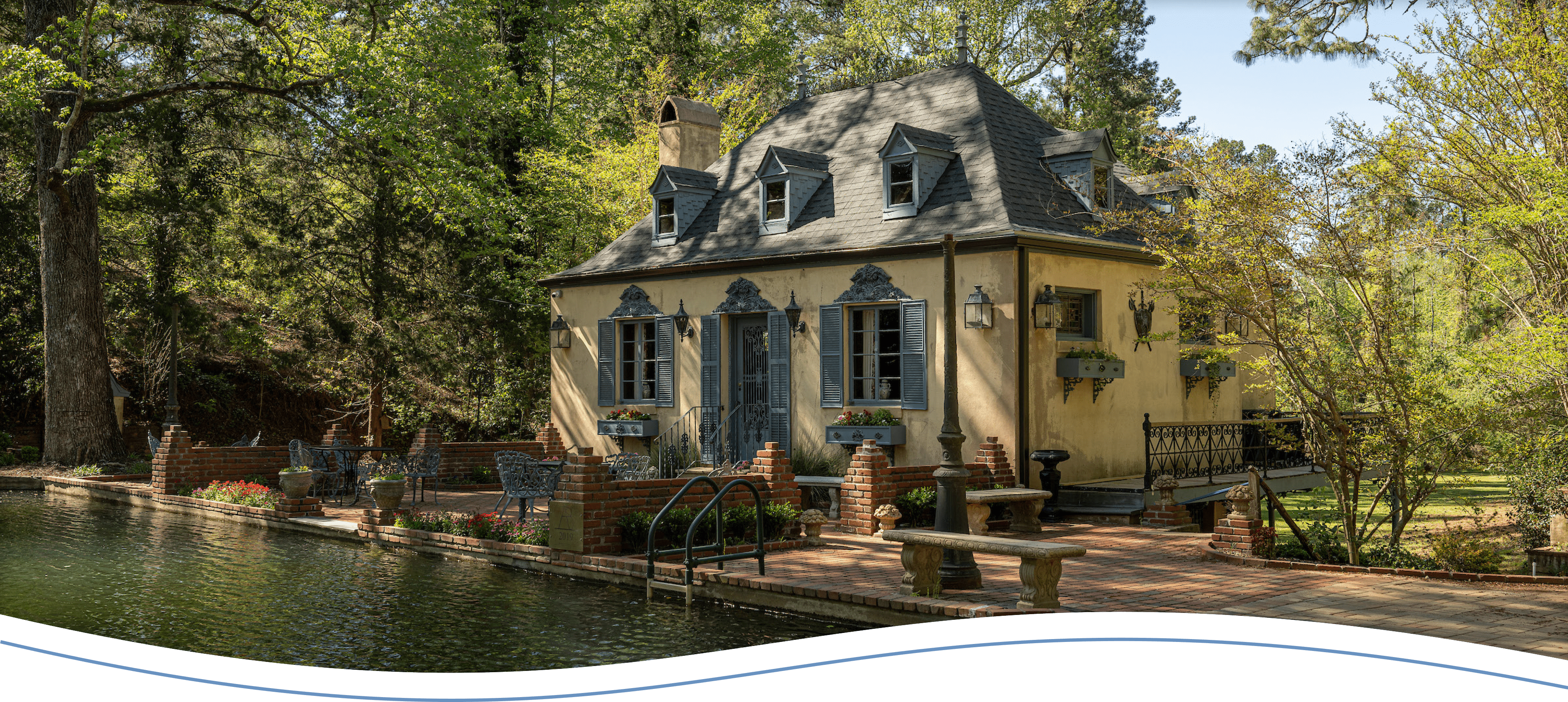

A Letter to the Owners of the Boardman Garden at Bath, Georgia by Davyd Foard Hood, Architectural and Landscape Historian – 2 June 2014
Following on a visit to the Boardman Garden at Bath on Thursday, 24 April 2014, I am writing to you in regard to the significance, stewardship, preservation, and future use of the garden created by Alonzo P. Boardman, beginning in the 1950s. I visited the garden at the invitation of Catherine Fleming, with her and Mary Jane Lamperski. We are members of the Charlotte Camellia Society. During one of the society events, I first learned of the existence of the garden and Mr. Boardman’s work, and we later discussed the garden at some length. Ms. Fleming subsequently sent me a copy of the two-page article published in the Chronicle-Herald on 5 July 1970.
Between the newspaper text and photographs of the garden and conversations with Ms. Fleming, I was looking forward to seeing the property and the enhancements crafted by Mr. Boardman. My interest in the trip was influenced as well by my professional, working knowledge of Georgia gardens. Privately, or on tours sponsored by the Southern Garden History Society, I have spent many, many hours in gardens in Atlanta, Madison, Athens, and Thomasville, Georgia. Last year, at the request of the University of Georgia Press, I reviewed a proposal for a book on historic Georgia gardens that is now to be published by the press. At present, I am awaiting the decision of the National Park Service in regard to work on a proposed National Historic Landmark designation report for Hills & Dales in LaGrange, Georgia, the Callaway family estate that includes the historic 19th-century gardens created by Sarah Ferrell.
Despite the air of decline that pervades the terraces, upper ponds, and the garden houses, and the loss of many cypresses, I was much impressed by what I saw. I was also heartened by the fact that the critical features of the hardscape, retaining walls, important water features and other evidence of impoundments, the paired garden houses, pump house, and the splendidly-sited lodge, where we had lunch, survive in good condition. Important plantings in the garden and grounds also survive in similar conditions, including some of the azalea plantings on the terraces and near the lodge. Despite the losses, decline, and reduced maintenance, Mr. Boardman’s intentions remain visible and his achievements largely intact.
Given the experience I brought to the visit, the understanding gained by the few hours there, refreshed now by the color photographs I shot that afternoon. I believe the Boardman Garden at Bath to be an important mid-twentieth-century garden in Georgia–and the South–and one that is probably eligible for listing in the National Register of Historic Places. I use “probably” only because, at present; I have had no direct experience with the State Historic Preservation Office in Georgia, which administers the National Register program in your state. The preparation of a National Register nomination for the garden, documenting the history and significance of Mr.
Boardman’s singular creation, is the first, critical step in gaining recognition of the garden and its importance in Georgia. The preservation of the garden, its restoration, and its future are dependent on gaining this larger appreciation and an administrative, institutional recognition of its value.
Meanwhile, as you consider the property, its future, and the initiatives that would lead to its preservation, certain inexpensive steps can and should be undertaken now to halt the deterioration and mitigate future damage to structures, hardscape, and historic plant materials that date to Mr. Boardman’s work from ca. 1957 onward. Vines and unwanted growth should be cut and removed from the garden buildings, stairs, retaining walls, terraces and pool features, where volunteer plants and seedlings are compromising stone and concrete work and historic plant materials. Buildings should also be treated for possible termite/pest infestation. These efforts, with professional guidance, would not be costly. Damage and decay stemmed now will reduce costs of repair, restoration, and/or replacement in the future, whatever decisions are made in regard to the use and ownership of Bath. Mr. Boardman went about his work for his own pleasure and that of you, his family, and friends. In the innocence of his labors he created a remarkable landscape and one that I can appreciate as a challenge for his heirs.
For the past, I am
Sincerely,
Sincerely,





